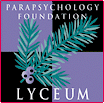 |
 |
| THE BIOGRAPHICAL DICTIONARY OF PARAPSYCHOLOGY JAMES ESDAILE Surgeon and mesmerist. B. February 6, 1808, Montrose, England; d. January 10, 1859, Sydenham, England. Educ. Edinburgh University: M.D., 1830. Physician for East India Company, 1831-35; directory of Hooghly Hospital (near Culcutta), 1839-46. Influenced by the writings of Dr. John Elliotson (q.v.) of University Hosptial, London, on the phenomena of mesmerism, Esdaile initially used "mesmeric passes" following the first of two operations on a Hindu convict. He succeeded in inducing "a complete suspensioin of sensibility to external impressions of a most painul kind," according to an English government official who witnessed the operatioin and the postoperative trance. A week later Esdaile used memerism preceding the second operatioin or when he awoke thirteen hours later. Esdaile's report on this case, published in the Indian Journal of Medical and Physical Science (May, 1945), produced general skepticism among phyicians, who were unaware of similar experiments by the surgeon James Braid (q.v.) proceeding at about the same time in England. Despite criticism, Esdaile continued with his use of mesmerism as an anesthetic in amputations and other major surgery, and in a year he accumulated reports on one hundred such cases. He presented these reports to the British Colonial Government, which appointed a four-man medical committee to investigate. The committee reported favorably, recommending that the government assist Esdaile in his work. A small hospital in Calcutta, open to the public and to government-appointed "medical visitors," was consequently placed at his disposal in November 1846 for a yearof experimentation. Esdaile trained his Indian servants and dressers to perform all mesmerization so that he could devote himself to the necessary surgery. A period of ten to twelve days was sometimes needed before a patient was considered sufficiently protected from pain, but sometimes the mesmerization process took as little as half an hour. The government-appointed medical observers held in their report (December 1847) that complete insensibility to paint was produced by mesmerism in the most severe operations, and that its use considerably reduced postoperative shock. In 1848 Esdaile was made Bengal Presidency Surgeon, one of the youngest men to hold the post. In the same year, chloroform and ether were introduced in India. Esdaile opposed an over-hasy adoption of these anesthetics, and continued with his use of mesmerism. Because he would perform such serious surgery as the removal of tumors in elephantiasis, cases which other physicians would not attempt, he was highly regarded by the Indians. Esdaile performed a total of 261 painless operations in the period before his return to Scotland in 1851. In Perth, he no longer practiced formally, devoting himself mainly to writing on mesmerism and his use of it. His few attempts to use mesmerism in Scotland met with small success, and Esdaile concluded that "only the depressing influence of disease will be found to reduce Europeans to the impressible condition of the nervous system so common among the Eastern nations." His publications include Mesmeric Facts (1845); Mesmerism in India and Its Practical Application to Surgery and Medicine (1846); Record of Cases Treated in Mesmeric Hospital, 1846-47, with Reports by Official Visitors (1847); The Introduction of Mesmerism as an Anesthetic and Curative Agent into the Hospitals of Inida (1852); Natural and Mesmeric Clairvoyance (1852). Taken from Helene Pleasants (1964) Biographical Dictionary of Parapsychology with Directory and Glossary 1946-1996 NY: Garrett Publications |
 |

|
 www. parapsychology. org |
||